HRC-S Aimpoint Degap Validation
2012-jun-28
It was recently discovered that the Chandra aimpoint drift[1] had caused the HRC-S sources observed with no offset to be preferentially located on tap CRSV=100.
This caused a noticeable asymmetry in the PSF, and was attributed to a sub-optimal degap solution[2].
The degap at taps adjacent to the HRC-S aimpoint had never been updated due to the paucity of data.
A solution for the HRC-S aimpoint degap, based on matching the aspect predicted locations with actual event positions, has now been calculated[3].
Based on algorithmic improvements discovered during this analysis, an update has also been calculated for the HRC-I degap[4].
These degap solutions were released in CALDB 4.5 on 2012-jun-27 as
files:
- HRC-I: $CALDB/data/chandra/hrc/gaplookup/hrciD1999-07-22gaplookupN0004.fits
- HRC-S: $CALDB/data/chandra/hrc/gaplookup/hrcsD1999-07-22gaplookupN0003.fits
In the following, we will show the effect the new degap solution has on various aspects of the data.
The new degap removes the asymmetry that occured due to the uncalibrated event positions in the CRSV=100 tap, reduces the systematic shortfall at tap edges, reduces distortions, and sharpens the PSF.
- The PSF has improved considerably after the application of
the new degap solution. The image below shows the zeroth order
for ObsID 14240, which was strongly affected by the CRSV=100 distortion.
The older version shows a clear elongation, which is suppressed in
the new analysis.
-
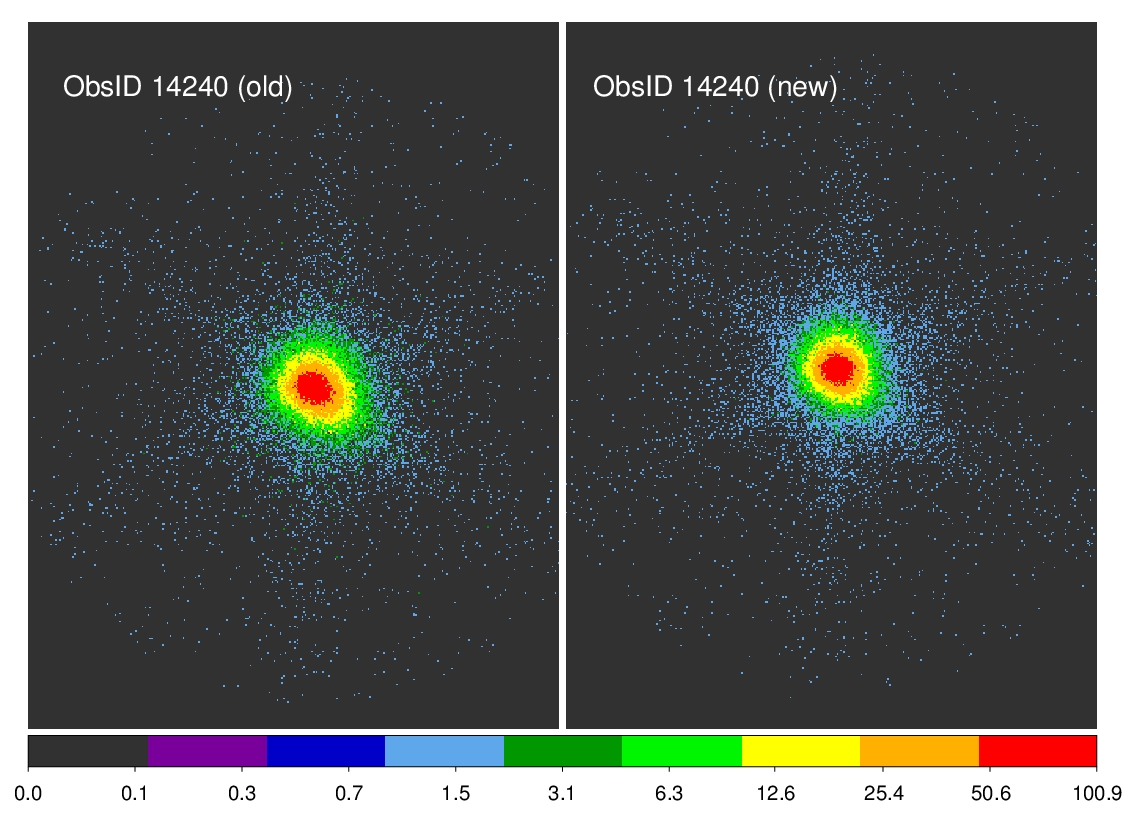
-
- A series of observations were carried out in early 2012 to
test the behavior of the gain and QE response as the voltage was
changed. These data were not used in the construction of the
new degap solution, and thus form a useful check for how well it
works. The plot below shows the 50% enclosed energy radius for
all the observations, calculated for both the old degap (black
diamonds) and for new (red diamonds). Because the LETG was
inserted into the light path, the PSFs have complex structure
that precludes a simple estimate of the size, but note that the
size shrinks in all cases.
-
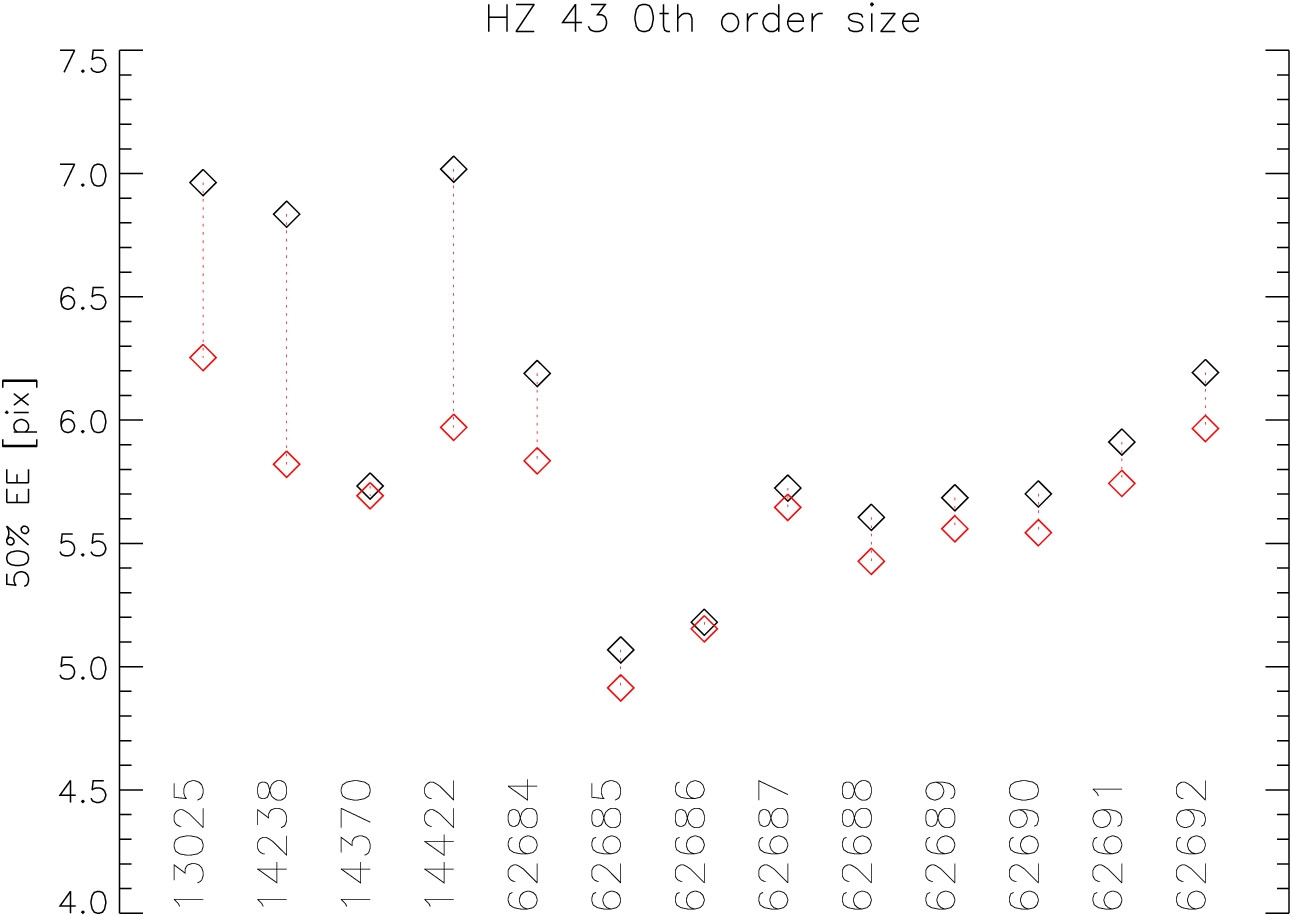
-
- For the same datasets as above, we have calculated the change
in the source positions. We find that typically the X-position
(along the dispersion axis) is shifted by 2-4 pix (~0.25-0.5 arcsec)
and the Y-position (along the cross-dispersion axis) is shifted by
~1 pix (~0.14 arcsec).
-
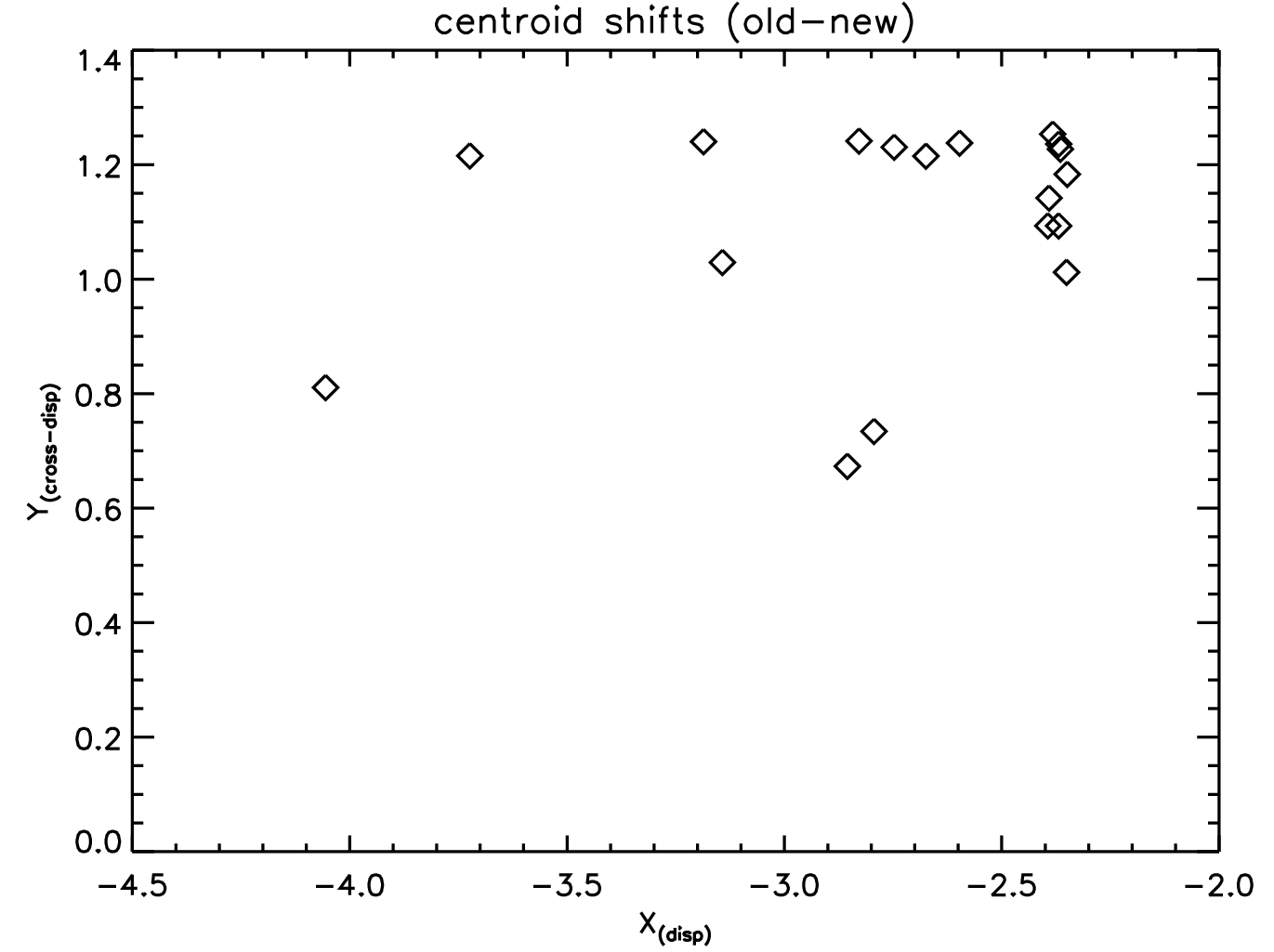
-
- We have checked whether the new degap solutions introduce
any distortions that would become visible in the images of
extended sources. Below is an image of the supernova remnant
G21.5-09. No degradation in image quality is seen.
-
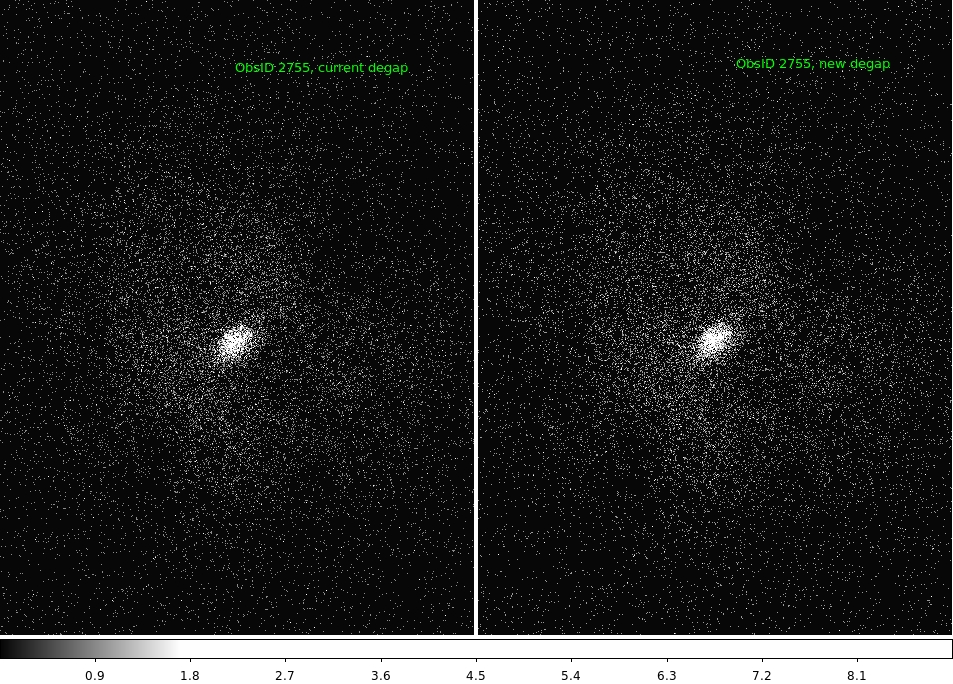
-
- The degap solution fills in the gap visible in RAW coordinates.
The resulting CHIP coordinates should, in principle, have no
gaps. In practice, the gaps are not completely eliminated due
to approximations made in deriving the degap solution. Below
we show the improvement in eliminating the gap for the HZ 43
voltage change dataset (see above), for amplifier scale factor
values of AMP_SF=1 (left), AMP_SF=2 (middle), and AMP_SF=3 (right).
There are very few events with AMP_SF=3 in this dataset because
HZ 43 is a soft source. The CHIP images for the old solution are
to the left, and those for the new solution are to the right.
A qualitative improvement in how well the gap is filled is easily
seen. There is room for improvement in dealing with AMP_SF=2 events.
-
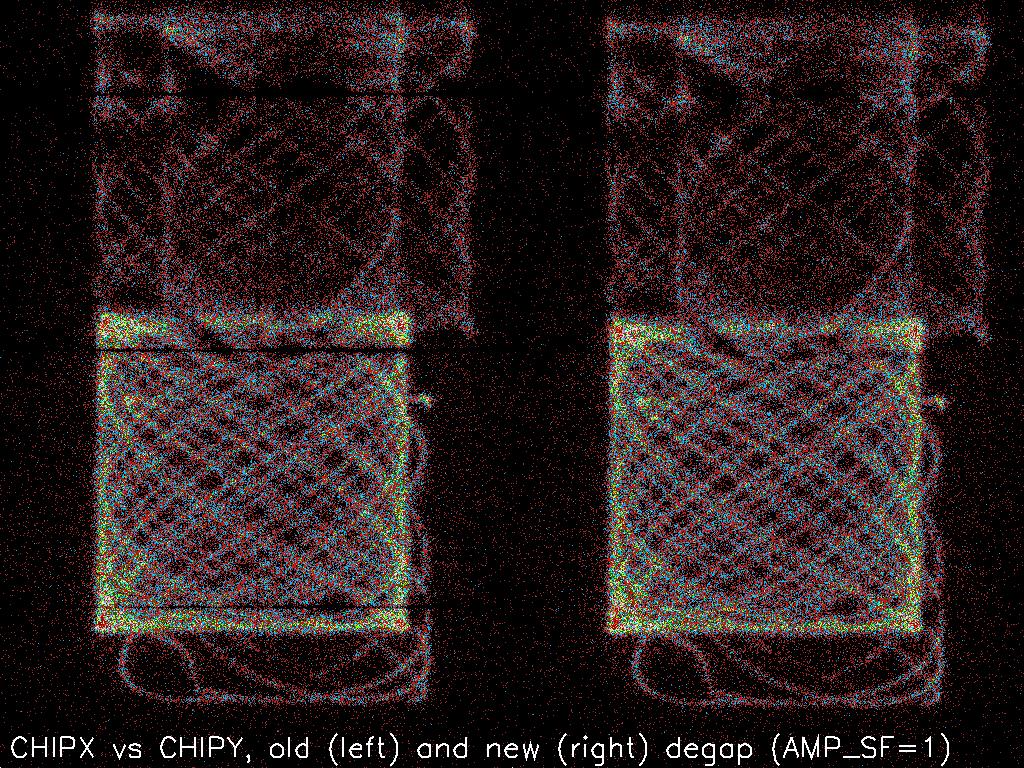
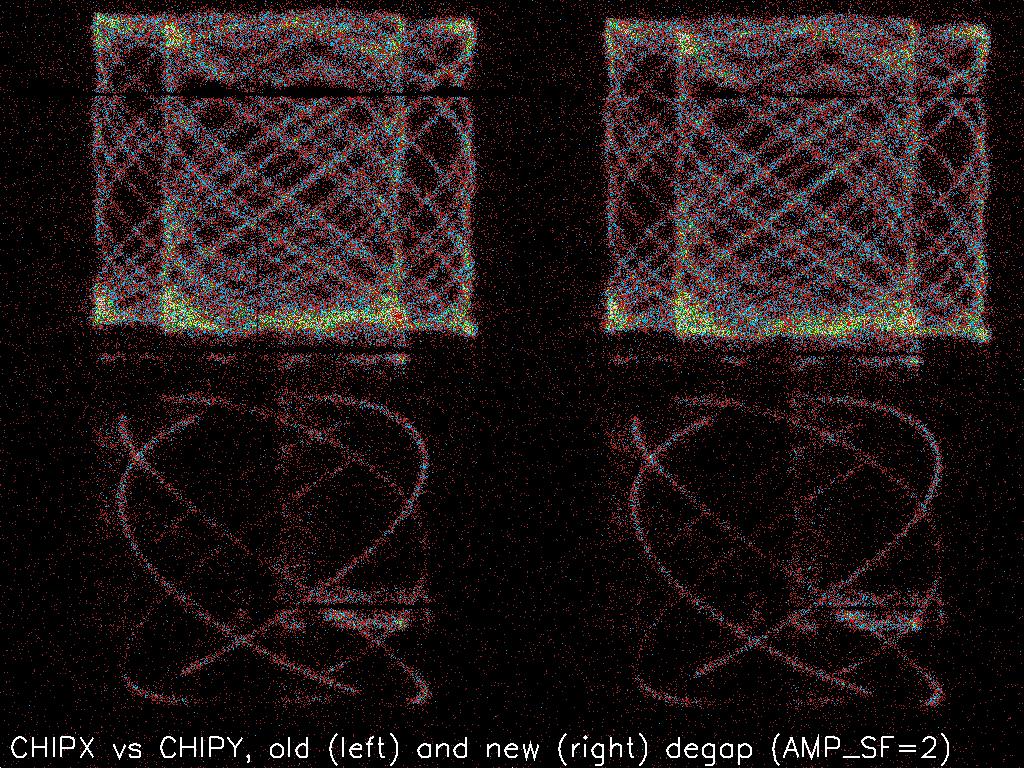
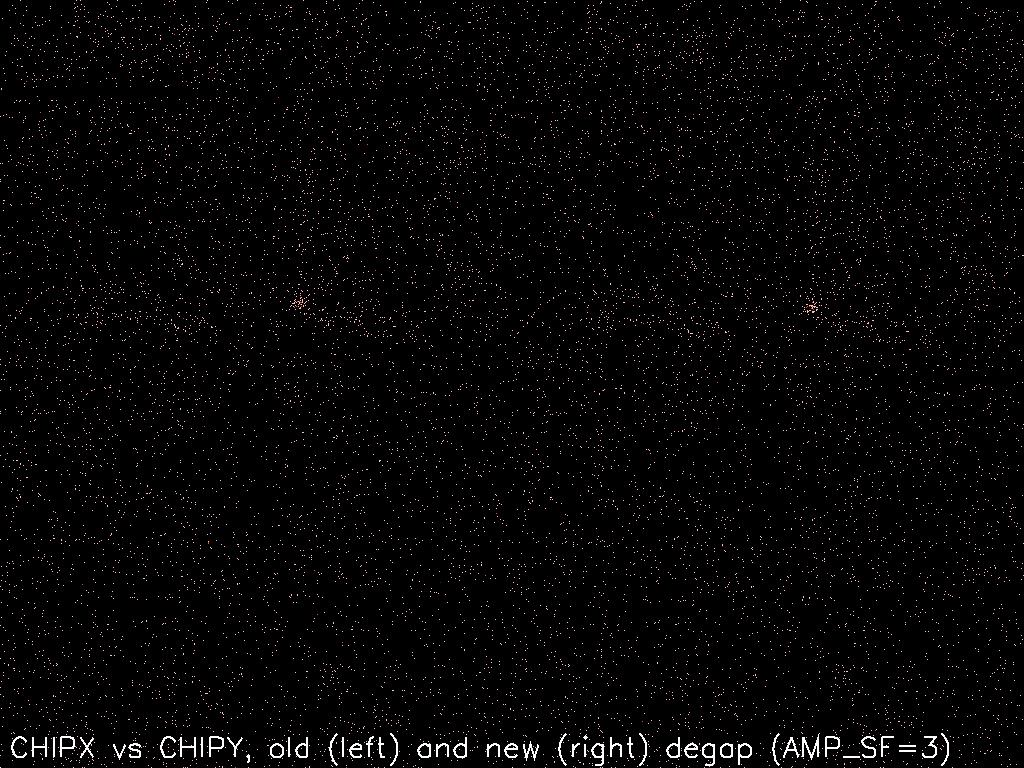
-
- As above, for the extended source, SNR G21.5-09.
The images, in CHIP coordinates, for old (left) and new (right)
degap solutions are shown for all events (first set), for
AMP_SF=1 (second set), AMP_SF=2 (third set), and AMP_SF=3 (last set).
-
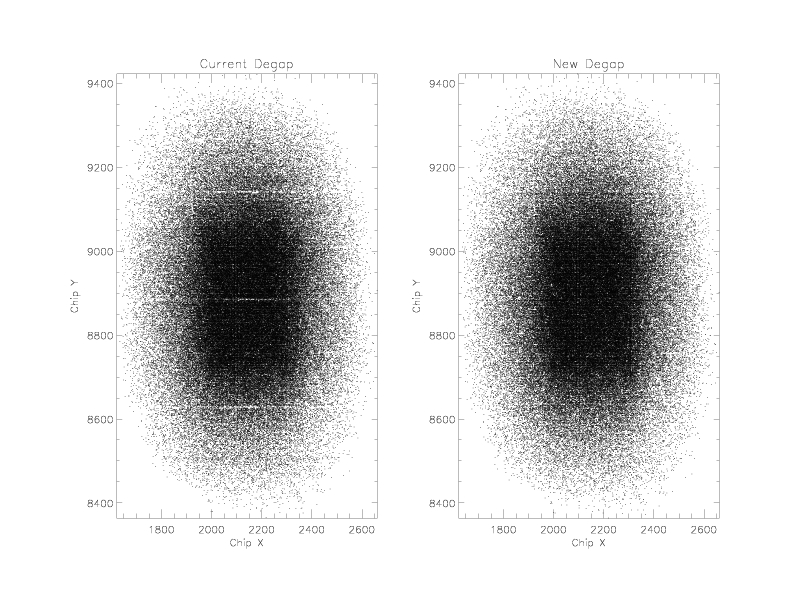
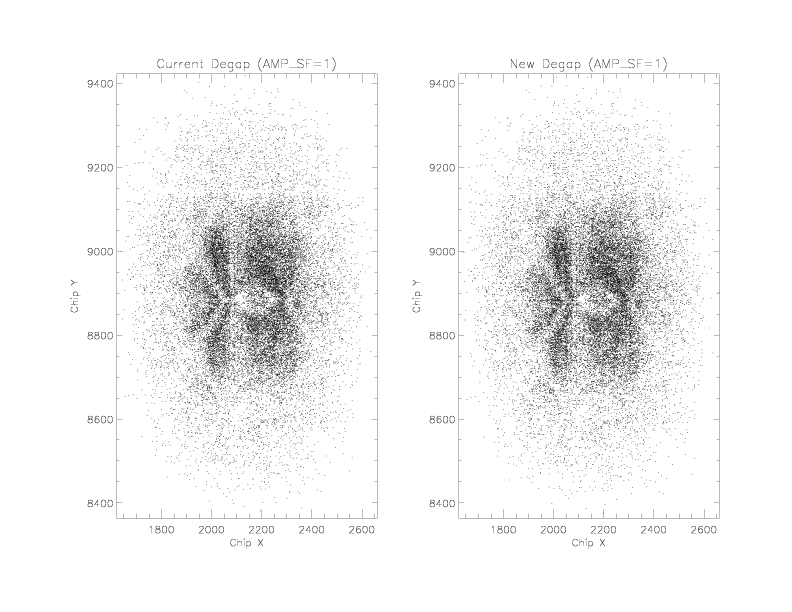
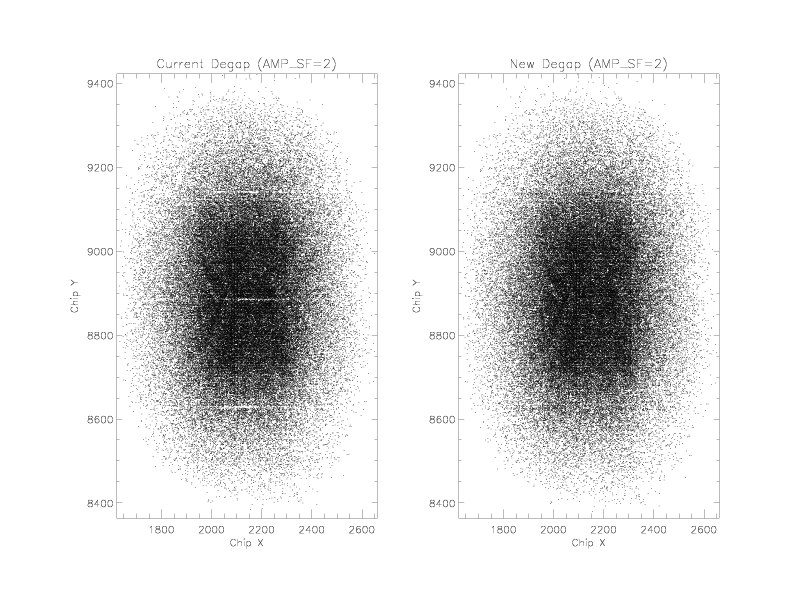
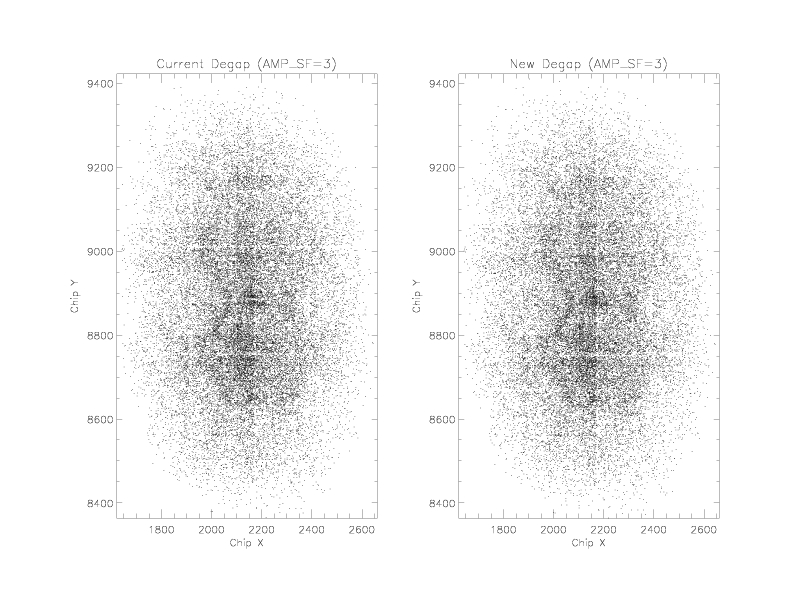
-
- Characterizing how much the source position changes due to
the degap solution update is difficult because different sources
dither over different parts of the detector and direct comparisons
are not feasible. Nevertheless, we show a scatterplot of the changes
in the centroid positions for the set of HZ 43 voltage change dataset
(see above), in CHIP coordinates. (For similar plot in derolled
SKY coordinates, see above).
-
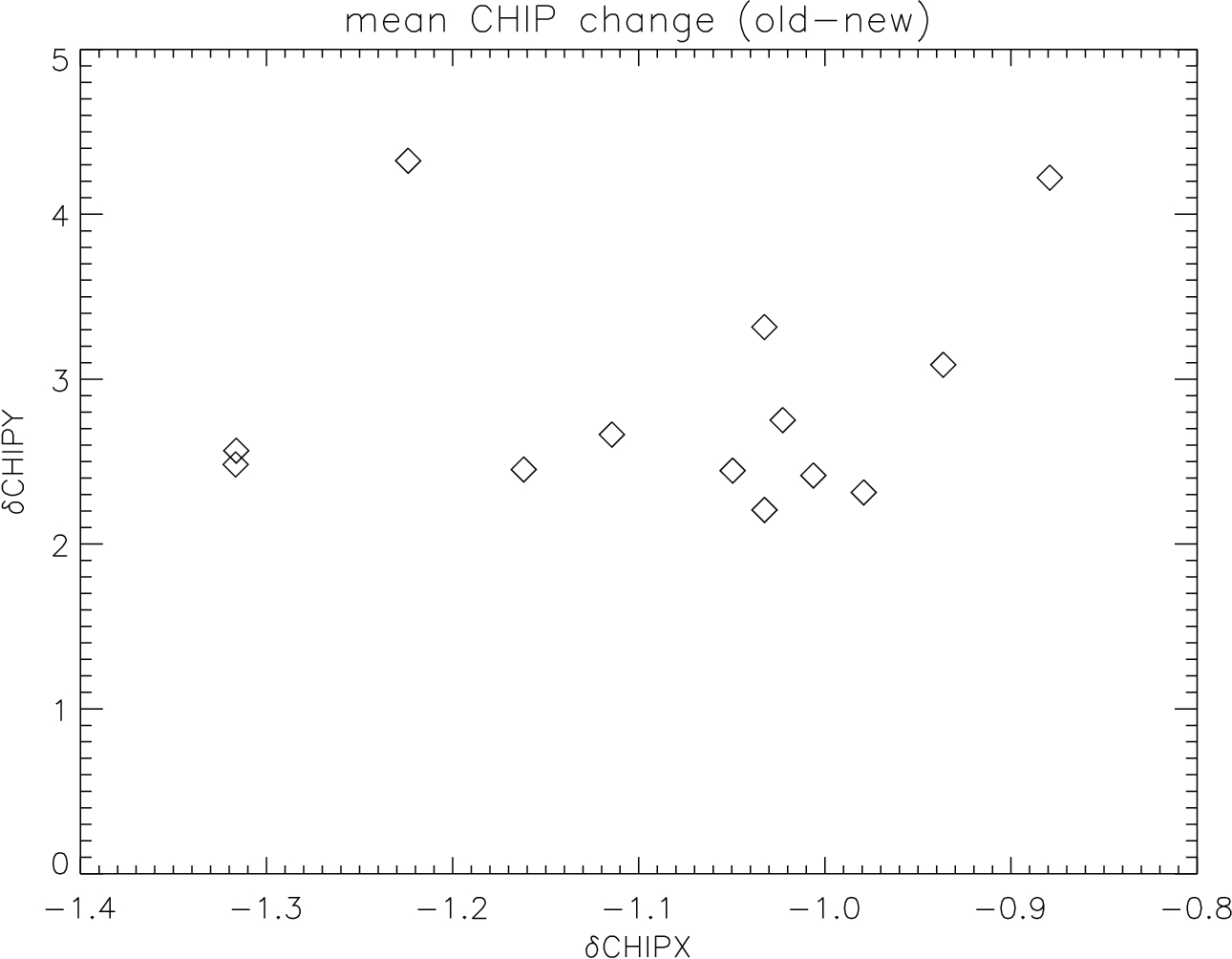
-
- The problem with the degap near the aimpoint has existed since launch,
but came into prominence recently as the zeroth order drifted into the bad
tap. We recommend that any result that relied on estimating point source
positions near the aimpoint at better than ~0.25 arcsec, or studied distortions
near the aimpoint, or had the dither pattern overlap CRSV=100, be reprocessed
with the new degap maps once they are in the CALDB.
- ObsIDs with point sources that are affected, by having at least 100 counts
that fall on the CRSV=100 tap are:
01857,
03831,
04575,
05316,
05317,
06624,
08189,
08274,
08505,
08548,
08899,
09765,
10622,
10665,
10667,
10669,
11245,
11932,
11933,
12097,
12101,
12122,
12154,
12203,
12324,
12325,
12332,
12401,
12915,
12916,
13025,
13068,
13121,
13184,
13240,
13651,
14240.
In many of these cases, it is the dispersed spectra that are affected.
In addition, all ObsIDs with extended sources are also affected.
- In general, for sources without large numbers of events in the
CRSV=100 tap, the systematic error introduced in the wavelength
calibration due to the distortion of the zeroth order PSF is smaller
than residual degap uncertainties[5],
especially on outer plates, and is comparable on the central
plate[6]. Any datasets where
absolute wavelength calibrations of <0.01Å are required, or
where systematic offsets are seen between the +ve and -ve order
wavelengths, must be reprocessed.
- [1] HRMA Optical Axis and Telescope Aimpoint (Ping Zhao)
- [2] HRC-S Event Position Errors Near the Aim Point (Brad Wargelin)
- [3] HRC-S Degap Look-up Near the Aim-point (Mike Juda)
- [4] HRC-I Degap Update (2012) (Mike Juda)
- [5] The Dispersion Relation of the LETGS and the Accuracy of Chandra Velocity Studies (Jeremy Drake)
- [6] The Imaging and Spectral Performance of the HRC (Vinay Kashyap)
Vinay Kashyap & Jennifer Posson-Brown















